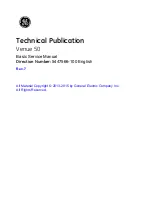
Table 4-2: Cross Sensitive Gases/Compounds
(continued)
Cross sensitive gas
Cross sensitive gas
concentration
Reading
Nitrogen dioxide
5 ppm
-0.5 ppm
Nitric oxide
35 ppm
< 7 ppm
Hydrogen
100 ppm
< 60 ppm
Chlorine
1 ppm
0 ppm
Ethylene
100 ppm
< 90 ppm
4.2
Bump testing
As part of the site preventative maintenance program Net Safety recommends bump
testing the sensor every three months. Bump testing consists of a visual inspection of the
sensor, application of a known gas concentration to the sensor to verify the accuracy of
the response to the specifications of the sensor, and alarm system simulation. If the
response is outside of the specifications of the sensor, calibrate the sensor.
Refer to
for more information. After calibrating, Net Safety recommends bump
testing to verify accuracy and response of the sensor.
4.3
Replace sensor module
Emerson pre-calibrates the sensors at the factory; however, you must perform field
calibration as a part of commissioning. When the sensor end of life diagnostic indicates a
fault condition, you can no longer calibrate, or the sensor is not working properly, you may
need to replace the sensor module.
WARNING
Do not open the transmitter, sensor, or junction box enclosure when in a classified area or
when an explosive atmosphere may be present unless the power to the sensor has been
removed.
CAUTION
Avoid touching any electronic components, as they may be susceptible to electrostatic
discharge (ESD).
Refer to
Electrostatic sensitive device
for further information and instructions on
properly handling electronic components.
Procedure
1. Remove power from the sensor.
2. Remove the locking ring by loosening the set screws with 1.5 mm Allen Key tool.
Maintenance
Reference Manual
November 2020
00809-0100-4303
24
Emerson.com/FlameGasDetection









































